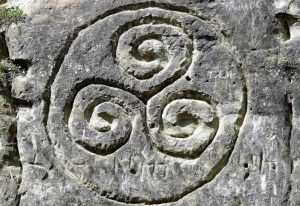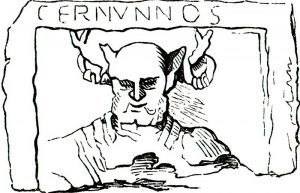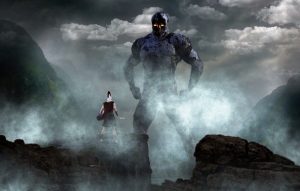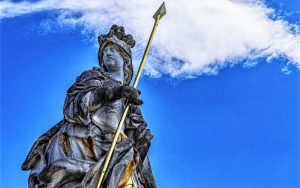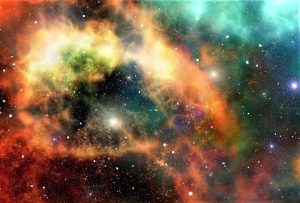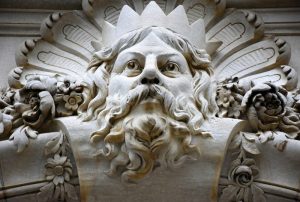Celtic mythology
Celtic mythology is known for being a series of religiously based stories that the Celts maintained during the Iron Age. It is worth mentioning that the Celts were not a very unified group that was aware of their ethnic identity. Nor did they form an empire. Their world was a collection of different chiefdoms and diverse families that were linked by different languages and a common culture. Adventure, heroism, romance and magic are some of the elements that make Celtic mythology one of the most fascinating mythologies in Europe. At a certain point in history, some powerful people dominated much of Europe, the Celts were then reduced to a few groups after the Roman invasions. However, their mythology survived, thanks to the efforts of the medieval Irish and Welsh monks who wrote the stories.
What is Celtic mythology?
Celtic mythology is a series of stories based on religion and full of adventure, heroism, romance and magic performed by the Celts during the Iron Age, making it one of the most important and fascinating mythologies throughout Europe.
History of Celtic mythology
Although it is well known, there are several reasons why it has not been possible to gather more information regarding its history than what is already known, and one of the main reasons was that the Celts mistrusted writing and did not master it very well. For them, the fact of writing a text paralyzed them, and myths had to survive. And, for this reason, the Druids learned long poems by memory in order to be able to teach later. Another reason why there is little information is that there was not just one Celtic people, but several of them. Therefore, we can say that Celtic mythology is multiple and that each region that formed it had its own local gods.
Symbols
The symbols used by Celtic mythology were used as a tool for protection, to give courage to their warriors, to defeat their enemies, to have luck in love or to delimit the right path to follow. These are some of the most popular Celtic symbols:
- The Trisquel: This is the best known Celtic symbol today and meant the balance between body, mind and spirit or the past, present and future. It was closely related to the beginning and the end of things.
- The Spiral: Meant that things have neither beginning nor end but on the contrary, eternal life. They gave as an example the sun that rises every morning, dies at night and rises again the next morning.
- The Awen: It was also known as the symbol of three rays and was a symbol of balance between masculine and feminine energy. It had three parallel rays to each other and was often used in jewelry. The first and the last ray meant the powers of “man” and “woman” respectively. The middle ray meant the balance and equality of the other rays.
- Claddagh: Formed of three parts, each with its own meaning. The crown symbolizes loyalty, the heart represents love and the hands that hold it symbolize friendship. It was used in rings as a symbol of commitment.
- Crann Bethadh or Tree of Life: It was a sacred symbol, representing the world of spirits, the welfare and integrity of peoples. It reflects the connection of its branches, which touched the sky, with its roots, which descended into the world of the dead. Each tree had a different meaning, from the protection of the birch to the imagination of the willow or the wisdom of the ash tree.
Gods of Celtic mythology
Their main gods were the following:
- Taranis: He was the god of thunder and was represented mounted on a carriage with which he could cross the sky.
- Dea Dame: This is a mother goddess who was represented by three women carrying different elements.
- Dagda: God of magic and wisdom, warrior and fighter. He could easily give life and take it away.
- Lugh: He is the god of sun and light; he is a natural leader and expert in battles.
- Morrigan: He had the ability to change from human to animal form. She was the goddess of war.
- Epona: Goddess of the earth with the gift of fertility, she protected riders and horses.
Creatures of Celtic mythology
- The afang was an aquatic and mysterious monster of Celtic tradition similar to a dragon or probably a snake and is considered as an antecedent of the “Lake Ness Monster”.
- Banshees are a part of Irish folklore. They were feminine spirits that through their groans announced the death of a relative in an Irish family. They are considered fairies and messengers of the other world. Each family had its own banshees, which remained serving them for centuries.
- The kelpie were spiritual beings, who according to legends lived in lakes, as they would be spirits of water. They appeared before human beings in the form of a horse, although it can also take human form and even the form of a hippocampus.
- The puka had the ability to change No matter what form it took, its skin was dark. It commonly takes the form of an elegant black horse with a large mane and bright yellow eyes.
Heroes of Celtic mythology
- Manannan was an Irish mythological character. He was part of the Tuatha Dé Dannann. A powerful magician, wearing a flaming helmet that dazzles his enemies, an invulnerable armor, an invisible cape and a ship that sails the sea without oars or sails.
- Ogmios was the representative of eloquence, his form was old and full of wrinkles dressed in lion’s skin. It is also a symbol of power and used the word ritual that unites the world of men with the world of gods. In his name are dictated blessings for friends and curses against enemies.
- Rhiannon was a great Welsh heroine, and her name means the great queen. She appears as an amazon and chooses Pwyll as her husband. She became pregnant and her son was taken away from her when he was born so she was accused of having made the child disappear, she is condemned to carry on her back all visitors who go to her husband’s fortress.
- Gwyddyon is one of the most famous heroes of the Welsh tradition. He is the son of Dana and the father of Lleu Llaw Gyffes. His name means wisdom and represents the magical power inherited from the ancient Druids.
Monsters
Some of the most feared monsters in Celtic mythology were:
- Dearg-due: He was a vampire who lived in Ireland. Its name is of Irish origin and means “red blood sucker”, is a female demon that seduces men to take all their blood.
- Dullahan: He was a man in black portrayed as the headless rider of Ireland.
- Balor: He was a demonic god who represented death in Celtic mythology.
Featured stories and legends
- Fergus and the river horse, Celtic legend: according to legend, Fergus was a ruler who liked to explore. One day, while exploring Lake Rury, he met a horrible creature with the body of a horse and was petrified. As he watched, his face contracted and deformed so when he returned to his kingdom, he asked that all mirrors be destroyed. Then, he decided to take revenge on the monster, since he did not appear and saw the river turn red, the inhabitants thought that the monster had killed him, but he returned with the head of the creature in his hand.
- The legend of Tristan and Isolde: it tells the story of Tristan, a knight of the round table, who met Isolde, a princess who healed his wounds after a battle. They fall in love and go through a series of problems. It is considered one of the most important poetic creations in the world.
How to cite this article?
Briceño V., Gabriela. (2019). Celtic mythology. Recovered on 23 February, 2024, de Euston96: https://www.euston96.com/en/celtic-mythology/
